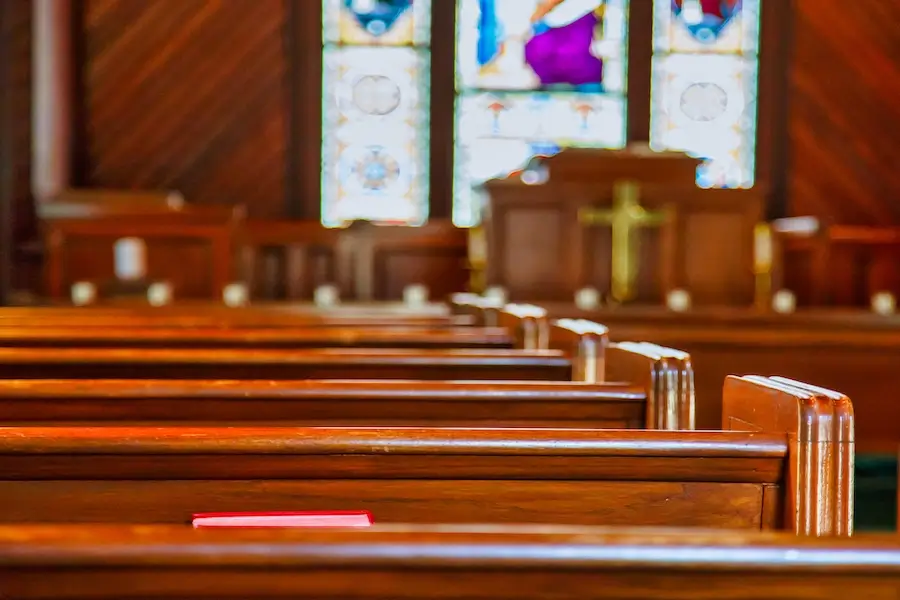Churches serve as centers of community, support, and worship, but just like other organizations, they face potential risks that could disrupt their operations. Developing a well-rounded risk management plan is crucial for creating a secure environment for all church activities, from worship services to community events. A comprehensive plan helps church leaders identify, prepare for, and respond to risks effectively, ensuring that their premises remain safe and welcoming.
Step 1: Identify Potential Risks

The first step in building a risk management plan is to recognize the specific threats and hazards a church might face. These potential risks can include:
- Physical Safety Risks: These include accidents, bodily injury, or property damage within church premises, especially in high-traffic areas such as entrances, exits, and stairways.
- Natural Disasters: Churches are not immune to natural hazards like floods, storms, and earthquakes, which can cause significant structural damage.
- Security Concerns: Unfortunately, places of worship are sometimes targets for theft, vandalism, and other security risks. Ensuring secure environments with the right preventive measures is key.
- Medical Emergencies: During services or events, the risk of medical emergencies is present. Churches should prepare to handle medical situations quickly and effectively.
Understanding these risks allows church leaders to assess which areas need the most attention, and what resources, such as alarm systems or first aid kits, should be in place.
Step 2: Conduct a Comprehensive Risk Assessment
A thorough risk assessment evaluates how likely and severe these potential risks are. This step often includes reviewing the physical layout of the church building, its surroundings, and the condition of facilities. During the assessment, it’s helpful to consider both daily operations and special events, which may introduce additional risks due to larger gatherings or unfamiliar individuals in the church setting.
Church leaders should work with knowledgeable individuals, such as insurance agents or local law enforcement, to evaluate their property, identify possible hazards, and understand the potential impact of various situations. This assessment also includes reviewing existing insurance policies to confirm adequate coverage and adjust as needed.
Step 3: Develop Security Protocols and Safety Measures
Implementing security protocols is essential to maintaining a safe environment. Here are some key components of effective church security plans:
- Access Control Systems: Limiting access to certain areas helps maintain security, especially during times when the church is closed or restricted.
- Alarm Systems and Surveillance Cameras: These tools help monitor church premises and deter criminal activities. Video surveillance also provides valuable evidence in the event of an incident.
- Regular Drills and Evacuation Procedures: Practicing drills for situations such as fire or evacuation helps staff and congregation members understand emergency procedures and reduces panic during actual events.
- Medical Emergency Preparedness: Preparing staff with basic first aid and CPR training can make a life-saving difference. Designating a team member to lead in medical situations ensures faster response times.
Step 4: Develop an Emergency Response Plan
Churches should have clear and comprehensive emergency response plans that cover potential crises, from natural disasters to security threats. This plan should outline specific steps to follow in different scenarios, such as fire, severe weather, or medical emergencies.
An effective emergency response plan should include:
- Evacuation Procedures: Detailed routes and safe exit points help everyone evacuate safely.
- Communication Protocols: Ensure there are reliable methods for communicating with staff and congregation members during emergencies. Consider establishing a phone tree or text alert system for fast information dissemination.
- Medical Emergency Response: Designate individuals who can provide basic medical assistance, and consider having medical supplies accessible at key locations within the church.
- Collaboration with Local Law Enforcement: Keeping open lines of communication with local authorities can expedite assistance when needed. Churches should also be aware of community resources and know whom to contact for specific types of incidents.
Step 5: Train Staff and Volunteers
A risk management plan is only as effective as the people implementing it. Church staff, volunteers, and safety teams need regular training to stay updated on safety procedures, security measures, and emergency protocols. Training sessions should include:
- Understanding Security Measures: Ensure everyone knows how to use security tools, such as alarm systems and access control measures.
- Emergency Drills: Conduct regular fire, evacuation, and medical drills to keep everyone prepared for different scenarios.
- Handling Medical Emergencies: Basic first aid and CPR training equips staff to respond promptly, potentially saving lives during critical moments.
- Effective Communication Techniques: Establish clear communication channels to reduce confusion during emergencies. Teach staff how to communicate calmly and clearly to manage situations more effectively.
Step 6: Regularly Review and Update the Plan
Risk management is an ongoing process. Churches should regularly review and update their risk management plans to address new potential threats or changes within the church property, staff, or congregation. Conducting annual reviews ensures the church is prepared for any potential hazard.
Church leaders should also monitor for any changes in local laws or safety regulations that may affect their responsibilities. Staying proactive in updating the plan and involving the congregation in safety awareness activities keeps everyone informed and prepared.
Step 7: Confirm Insurance Coverage for Comprehensive Protection
Having the appropriate insurance policies is vital for safeguarding against unexpected events. Churches should work with insurance agents to ensure their coverage includes liability insurance, property insurance, and specific endorsements tailored to the church’s needs. It’s essential to review insurance policies annually to confirm they adequately cover the church’s unique risks, from physical security to liability issues associated with church activities.
Building a Safer Church Community Through Preparedness
Developing a comprehensive risk management plan demonstrates a proactive approach to church safety. By addressing potential hazards, training staff, and maintaining effective communication, church leaders can create a safe environment that allows their congregation to focus on worship and community engagement. Whether it’s preparing for medical emergencies or securing church premises with physical security measures, the right planning makes all the difference.
A thorough plan doesn’t just protect the church—it builds trust and a sense of security for everyone involved. For more on maintaining a secure and welcoming church environment, check out related MinistrySure posts on Crisis Management Coverage and Cyber Liability Insurance for Churches, which address other critical aspects of comprehensive church protection.
MinistrySure understands the unique challenges churches face when navigating insurance claims after natural disasters. With a deep understanding of the church insurance market, MinistrySure offers guidance to help religious organizations secure the comprehensive coverage they need to protect their missions and buildings. Our team is here to support you every step of the way, from selecting the right policy to navigating claims and ensuring that your church has the financial resources to recover and continue its vital work. By working with MinistrySure, your church can be prepared for the unexpected and focus on providing a safe, welcoming environment for your community.
For more insights into protecting your church from potential risks, explore these related MinistrySure posts:






